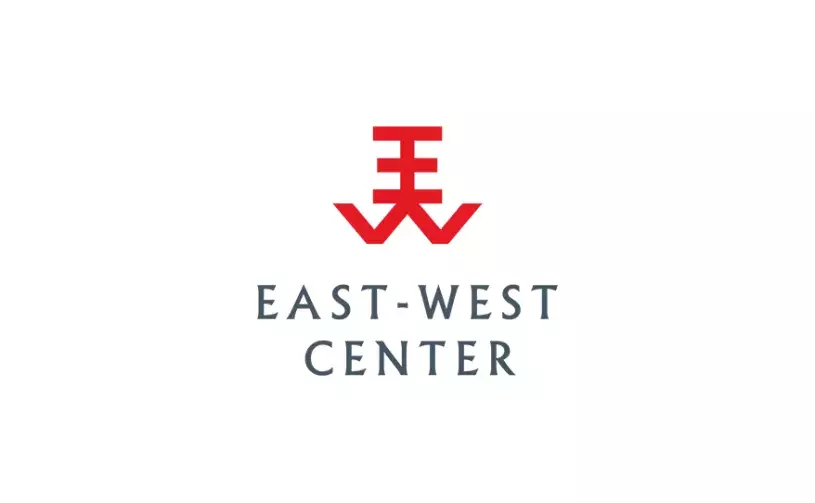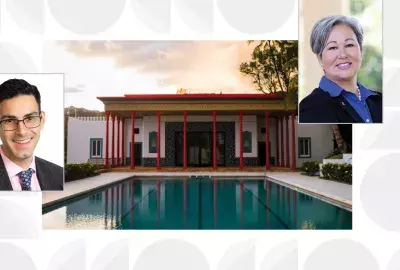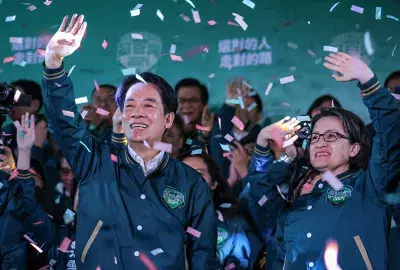Error message

By Marcus Noland
HONOLULU (Dec. 21, 2018)—After a nuclear weapons test and multiple intercontinental ballistic missile tests in 2017, this past year witnessed a significant shift in North Korea’s diplomatic posture, reflecting an apparent willingness to enter negotiations over its military programs. This shift has culminated in meetings between North Korean leader Kim Jong-un and his counterparts in South Korea and China and the first-ever meeting of the North Korean and American heads of state.
But what brought the North Koreans to the negotiating table? The “maximum pressure” narrative favored by the Trump administration emphasizes the role of economic sanctions, tough talk, and military exercises. Other observers ascribe the change in North Korea’s attitude to a strategic shift initiated by the North Korean leader Kim Jong-un himself.
Whether it is outside pressure or an autonomous change in attitude that has made the North Koreans willing to enter negotiations over their military programs, increased engagement and positive inducements are tools that can reinforce this shift and encourage faster, deeper movement in the desired direction. Indeed, China, Russia, and South Korea are all campaigning in favor of relaxing economic sanctions, and South Korea has recommitted itself to an agenda of engagement.
Engagement can encourage moderation of a country’s foreign policy behavior through several channels. At the simplest level, international exposure may have socializing and learning effects on policymakers, altering their cost-benefit calculus as they consider alternative courses of action. Economic engagement also strengthens stakeholders who have an interest in maintaining stable relations and may act as a constraint on their government’s foreign policy behavior. Ultimately, the expansion of such interest groups may shift the country’s governing coalition toward interests more amenable to international cooperation.
For this approach to work, the specific types of engagement matter. Without careful thought, a naïve strategy could enable North Korea to modernize its military rather than encouraging an evolution in a more peaceful direction. Encouraging a positive evolution in North Korea’s political economy will require careful planning by its negotiating partners, most critically by South Korea.
One problem, of course, is that the North Koreans well understand the full implications of engagement and will act in ways to blunt any transformative impact. One can imagine that from a North Korean standpoint, the objective of any increase in engagement is to obtain revenue with minimal changes in internal practices or associated risks to political stability.
From this standpoint, not all forms of engagement are alike. From a North Korean perspective, one can imagine a hierarchy of preferences based on the degree of challenge to internal practices. These might include: overflight rights; pipelines and railroads; physically delimited enclaves; or economy-wide access such as the Chinese have today.
Thus far, North Korea has largely confined international exchange, particularly with regard to South Korea, to enclaves with the least transformative potential. The Mt. Kumgang Tourism Project, for example, was literally fenced off from the rest of the country. It was closed after a South Korean tourist was killed by a North Korean guard.
Indeed, North Korea has a history of successfully deflecting the broader social and political effects of engagement. The experience of South Korean firms doing business in North Korea offers a useful example. Beginning in the 1990s, firms in South Korea were able to ship inputs to North Korea for finishing and assembly by North Korean partners, with the final products re-exported for sale in South Korea or elsewhere.
The centerpiece of South Korea’s commercial engagement was the Kaesong Industrial Complex. In many respects KIC operated as a South Korean island within North Korea. Inputs and financing came from South Korea. There were no “backwards and forwards linkages” into North Korea—the firms operating there did not obtain supplies from North Korea, nor did they sell the products they produced into the North Korean market. The only real North Korean inputs at KIC were the workers and the land. At its peak, however, firms operating in Kaesong employed more than 50,000 North Korean workers.
One would imagine that this level of engagement in the North Korean labor market might lead to some broader impact. To explore this possibility, in 2010 Stephen Haggard and I surveyed 200 South Korean firms that were engaged in trade or investment in North Korea. The results were eye-opening. We concluded that North Korea had successfully blocked any transformational impact that the presence of the South Korean firms might have had.
South Korean managers generally did not directly supervise their North Korean workers. Rather, workers were normally supervised through a North Korean intermediary. The North Korean government prescreened and hired workers, set wage rates, demanded payment in foreign currency, and absorbed the lion’s share of wage payments. Only one in five of the South Korean firms reported that they even knew how much their North Korean employees were being paid.
In short, interaction between South Korean firms and North Korean workers was extremely limited and thus unlikely to generate any transformational effect. For its part, there was no evidence that the South Korean government undertook any steps that would encourage or require its firms to abide by any labor standards whatsoever.
In considering today’s efforts to persuade North Korea to renounce its nuclear program, what might be done to push engagement in a more transformational direction? A key lesson from past experience is that transformative engagement will require South Korean government action, and that will occur only if there is greater political commitment than has been witnessed up to now.
South Korea is key. China has no interest in encouraging North Korea to evolve in a more liberal direction, and the United States and Japan do not have enough economic influence to make a difference.
Although many outcomes are possible, unless North Korea’s partners begin to emphasize more transformative approaches to engagement, the most likely result will be a sort of muddling through. Multi- and bi-lateral sanctions will not be removed, but enforcement will weaken, and countries will find work-arounds to re-engage with North Korea. In this scenario, North Korea will be accepted as a de facto nuclear state, much like Pakistan.
Effective transformative engagement, which might lock in a permanent alteration in North Korea’s military stance, will require careful design on the part of South Korea and North Korea’s other foreign counterparts. Otherwise, engagement risks simply enriching an unreformed North Korean state and enabling its dangerous development of weapons of mass destruction and their missile delivery systems.
Marcus Noland is a Non-Resident Senior Fellow at the East-West Center and Executive Vice President and Director of Studies at the Peterson Institute for International Economics in Washington, DC. This East-West Wire is based on North Korea: Sanctions, engagement, and strategic reorientation, by Marcus Noland, East-West Center Working Papers, Innovation and Economic Growth Series, No. 14, October 2018.
Download a PDF version of this Wire article.
##
The East-West Wire is a news, commentary, and analysis service provided by the East-West Center in Honolulu. All or any part of the Wire content may be used by media with attribution to the East-West Center or the person quoted. To receive Wire articles via email, subscribe here. For links to all East-West Center media programs, fellowships and services, see www.eastwestcenter.org/journalists.
The full list of East-West Wires produced by the Research Program is available on the East-West Center website. For more on the East-West Center Research Program, see www.eastwestcenter.org/research.
The East-West Center promotes better relations and understanding among the people and nations of the United States, Asia, and the Pacific through cooperative study, research, and dialogue.
Series editors:
Derek Ferrar
[email protected]
Sidney B. Westley
[email protected]
By Marcus Noland
HONOLULU (Dec. 21, 2018)—After a nuclear weapons test and multiple intercontinental ballistic missile tests in 2017, this past year witnessed a significant shift in North Korea’s diplomatic posture, reflecting an apparent willingness to enter negotiations over its military programs. This shift has culminated in meetings between North Korean leader Kim Jong-un and his counterparts in South Korea and China and the first-ever meeting of the North Korean and American heads of state.
But what brought the North Koreans to the negotiating table? The “maximum pressure” narrative favored by the Trump administration emphasizes the role of economic sanctions, tough talk, and military exercises. Other observers ascribe the change in North Korea’s attitude to a strategic shift initiated by the North Korean leader Kim Jong-un himself.
Whether it is outside pressure or an autonomous change in attitude that has made the North Koreans willing to enter negotiations over their military programs, increased engagement and positive inducements are tools that can reinforce this shift and encourage faster, deeper movement in the desired direction. Indeed, China, Russia, and South Korea are all campaigning in favor of relaxing economic sanctions, and South Korea has recommitted itself to an agenda of engagement.
Engagement can encourage moderation of a country’s foreign policy behavior through several channels. At the simplest level, international exposure may have socializing and learning effects on policymakers, altering their cost-benefit calculus as they consider alternative courses of action. Economic engagement also strengthens stakeholders who have an interest in maintaining stable relations and may act as a constraint on their government’s foreign policy behavior. Ultimately, the expansion of such interest groups may shift the country’s governing coalition toward interests more amenable to international cooperation.
For this approach to work, the specific types of engagement matter. Without careful thought, a naïve strategy could enable North Korea to modernize its military rather than encouraging an evolution in a more peaceful direction. Encouraging a positive evolution in North Korea’s political economy will require careful planning by its negotiating partners, most critically by South Korea.
One problem, of course, is that the North Koreans well understand the full implications of engagement and will act in ways to blunt any transformative impact. One can imagine that from a North Korean standpoint, the objective of any increase in engagement is to obtain revenue with minimal changes in internal practices or associated risks to political stability.
From this standpoint, not all forms of engagement are alike. From a North Korean perspective, one can imagine a hierarchy of preferences based on the degree of challenge to internal practices. These might include: overflight rights; pipelines and railroads; physically delimited enclaves; or economy-wide access such as the Chinese have today.
Thus far, North Korea has largely confined international exchange, particularly with regard to South Korea, to enclaves with the least transformative potential. The Mt. Kumgang Tourism Project, for example, was literally fenced off from the rest of the country. It was closed after a South Korean tourist was killed by a North Korean guard.
Indeed, North Korea has a history of successfully deflecting the broader social and political effects of engagement. The experience of South Korean firms doing business in North Korea offers a useful example. Beginning in the 1990s, firms in South Korea were able to ship inputs to North Korea for finishing and assembly by North Korean partners, with the final products re-exported for sale in South Korea or elsewhere.
The centerpiece of South Korea’s commercial engagement was the Kaesong Industrial Complex. In many respects KIC operated as a South Korean island within North Korea. Inputs and financing came from South Korea. There were no “backwards and forwards linkages” into North Korea—the firms operating there did not obtain supplies from North Korea, nor did they sell the products they produced into the North Korean market. The only real North Korean inputs at KIC were the workers and the land. At its peak, however, firms operating in Kaesong employed more than 50,000 North Korean workers.
One would imagine that this level of engagement in the North Korean labor market might lead to some broader impact. To explore this possibility, in 2010 Stephen Haggard and I surveyed 200 South Korean firms that were engaged in trade or investment in North Korea. The results were eye-opening. We concluded that North Korea had successfully blocked any transformational impact that the presence of the South Korean firms might have had.
South Korean managers generally did not directly supervise their North Korean workers. Rather, workers were normally supervised through a North Korean intermediary. The North Korean government prescreened and hired workers, set wage rates, demanded payment in foreign currency, and absorbed the lion’s share of wage payments. Only one in five of the South Korean firms reported that they even knew how much their North Korean employees were being paid.
In short, interaction between South Korean firms and North Korean workers was extremely limited and thus unlikely to generate any transformational effect. For its part, there was no evidence that the South Korean government undertook any steps that would encourage or require its firms to abide by any labor standards whatsoever.
In considering today’s efforts to persuade North Korea to renounce its nuclear program, what might be done to push engagement in a more transformational direction? A key lesson from past experience is that transformative engagement will require South Korean government action, and that will occur only if there is greater political commitment than has been witnessed up to now.
South Korea is key. China has no interest in encouraging North Korea to evolve in a more liberal direction, and the United States and Japan do not have enough economic influence to make a difference.
Although many outcomes are possible, unless North Korea’s partners begin to emphasize more transformative approaches to engagement, the most likely result will be a sort of muddling through. Multi- and bi-lateral sanctions will not be removed, but enforcement will weaken, and countries will find work-arounds to re-engage with North Korea. In this scenario, North Korea will be accepted as a de facto nuclear state, much like Pakistan.
Effective transformative engagement, which might lock in a permanent alteration in North Korea’s military stance, will require careful design on the part of South Korea and North Korea’s other foreign counterparts. Otherwise, engagement risks simply enriching an unreformed North Korean state and enabling its dangerous development of weapons of mass destruction and their missile delivery systems.
Marcus Noland is a Non-Resident Senior Fellow at the East-West Center and Executive Vice President and Director of Studies at the Peterson Institute for International Economics in Washington, DC. This East-West Wire is based on North Korea: Sanctions, engagement, and strategic reorientation, by Marcus Noland, East-West Center Working Papers, Innovation and Economic Growth Series, No. 14, October 2018.
Download a PDF version of this Wire article.
##
The East-West Wire is a news, commentary, and analysis service provided by the East-West Center in Honolulu. All or any part of the Wire content may be used by media with attribution to the East-West Center or the person quoted. To receive Wire articles via email, subscribe here. For links to all East-West Center media programs, fellowships and services, see www.eastwestcenter.org/journalists.
The full list of East-West Wires produced by the Research Program is available on the East-West Center website. For more on the East-West Center Research Program, see www.eastwestcenter.org/research.
The East-West Center promotes better relations and understanding among the people and nations of the United States, Asia, and the Pacific through cooperative study, research, and dialogue.
Series editors:
Derek Ferrar
[email protected]
Sidney B. Westley
[email protected]
East-West Wire
News, Commentary, and Analysis
The East-West Wire is a news, commentary, and analysis service provided by the East-West Center in Honolulu. Any part or all of the Wire content may be used by media with attribution to the East-West Center or the person quoted. To receive East-West Center Wire media releases via email, subscribe here.
For links to all East-West Center media programs, fellowships and services, see www.eastwestcenter.org/journalists.







